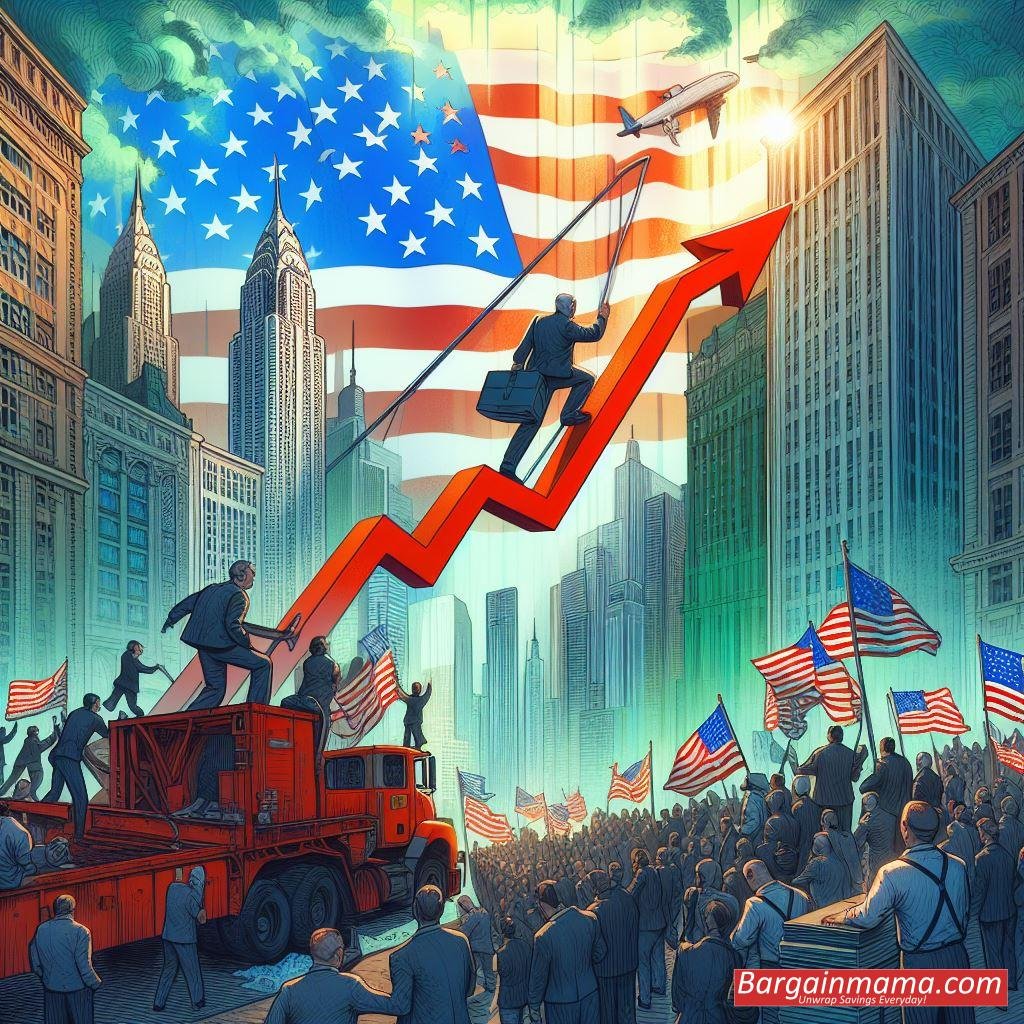Amid worries about persistent inflation, American business productivity appears to be on the rise after 15 years of stagnation, giving the stock market some confidence. According to recent research from Bank of America, the average revenue per employee for S&P 500 businesses hit an all-time high in February, which represents a major advancement in resolving a long-standing problem.

Concern has been raised about the stagnating productivity levels during the last fifteen years, which have hindered growth and made it difficult for companies to stay competitive. But this recent productivity spike points to a possible tipping point and gives corporate America hope.
The significance of this productivity boost was emphasized by Ohsung Kwon, a US and Canada equities analyst at Bank of America, who pointed out that it may help corporations overcome some of the macroeconomic challenges they are facing. The capacity to increase productivity becomes critical for companies looking to preserve profitability and expansion as inflation worries become more pressing.
Understanding the relationship between inflation and productivity is essential to comprehending the state of the economy today. Although concerns about inflation have been warranted, productivity growth may act as a counterweight. Chief market strategist at Carson Group Ryan Detrick stressed the importance of productivity in reducing inflationary worries, speculating that increased productivity might lessen the likelihood of price increases.

Detrick’s colleague Sonu Varghese went into further detail on the connection between inflation, productivity, and wage growth. Wage growth has always been linked to inflationary pressures since rising consumer spending raises both demand and prices. However, businesses can match this demand by manufacturing more items if productivity increases, which will stabilize prices and lessen inflationary pressures.
Examples from history emphasize the role that productivity plays in economic expansion. The disparate experiences of the 1970s and the 1990s demonstrate how important productivity is in determining the course of the economy. Wage increases can intensify inflationary tendencies in the absence of productivity advances, as was seen in the 1970s. On the other hand, lucrative economic expansions and stock market gains have correlated with periods of strong productivity growth, such as the 1990s.
The head of Renaissance Macro’s economic research, Neil Dutta, underlined the wider effects of higher productivity on the US economy. Productivity increase drives economic growth overall and creates the conditions for long-term expansion and prosperity.
Furthermore, it is impossible to ignore how artificial intelligence (AI) may affect productivity. Even though its full potential has not yet been reached, AI has the potential to significantly increase productivity. Kwon compared artificial intelligence to “the cherry on top,” predicting that it will revolutionize productivity in the years to come.

In tackling persistent issues, corporate America’s productivity recovery represents a critical turning point. Gaining ground on inflationary pressures, increasing economic growth, and improving competitiveness are all possible outcomes of the renewed productivity momentum, which is encouraging for investors and businesses alike. The route to sustainable productivity growth seems increasingly hopeful as businesses continue to use innovation, particularly advances in artificial intelligence. This portends better things to come for the American economy.


